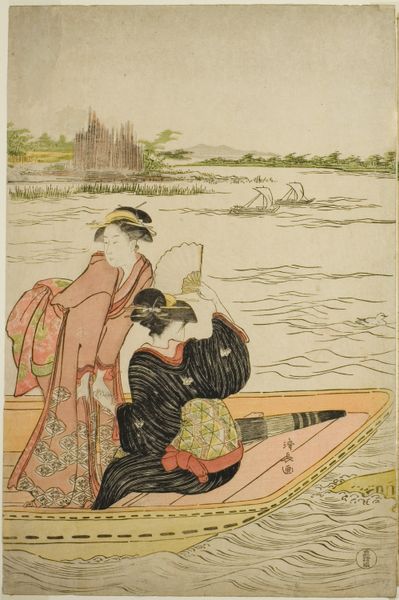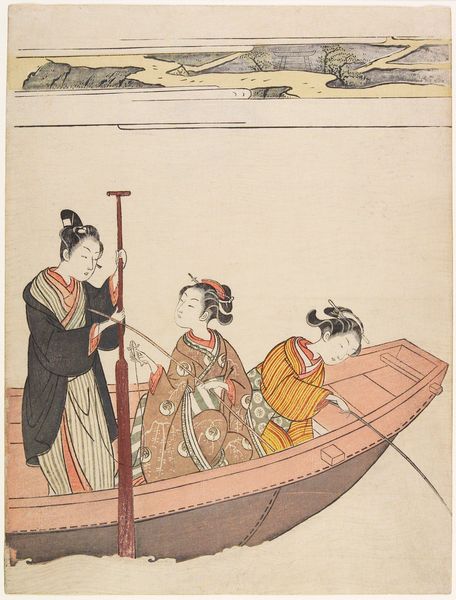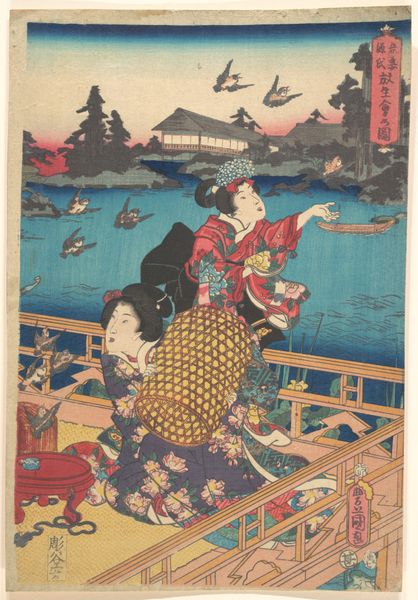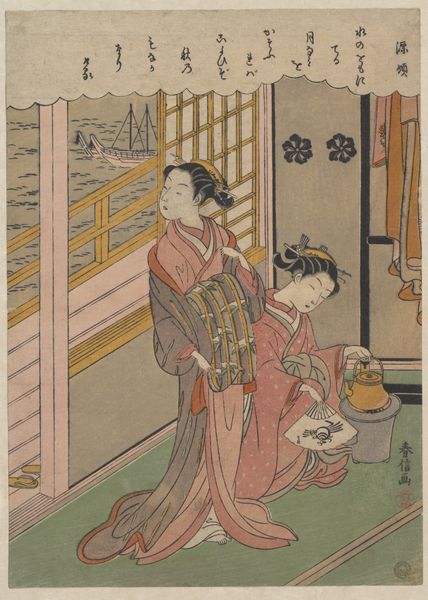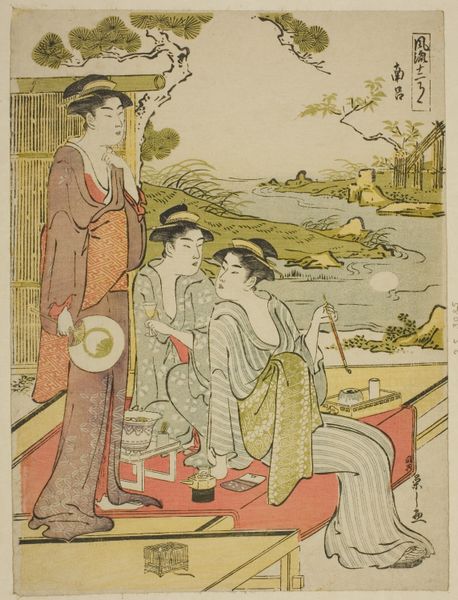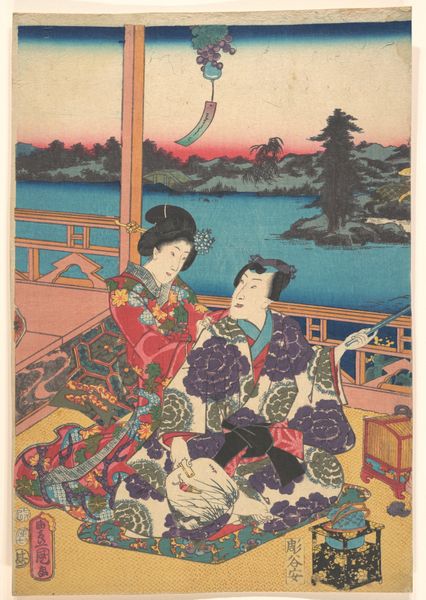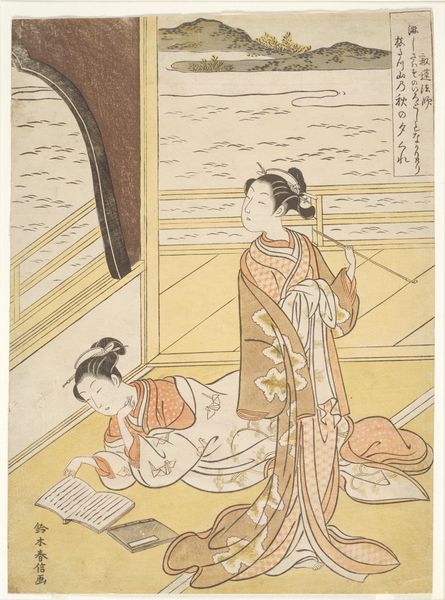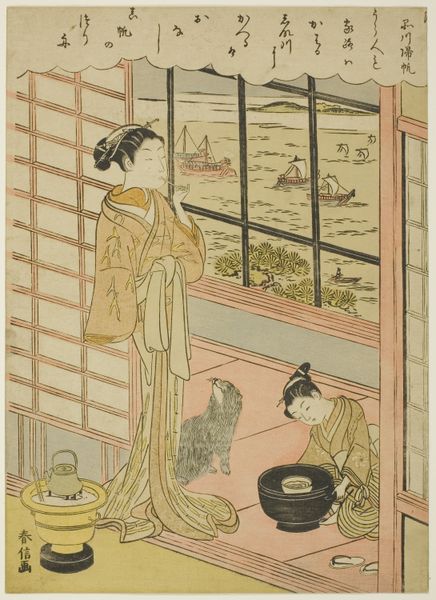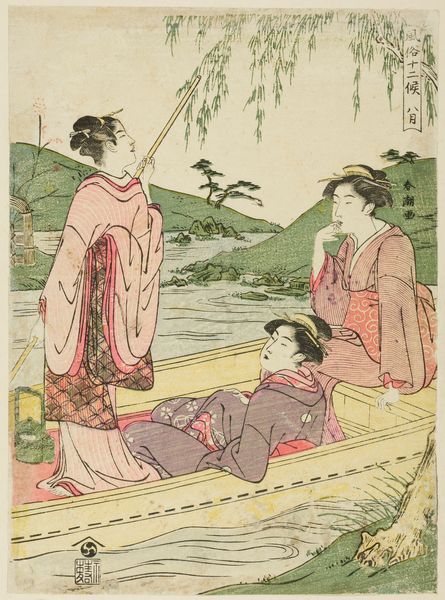
print, woodblock-print
# print
#
asian-art
#
landscape
#
ukiyo-e
#
figuration
#
woodblock-print
#
genre-painting
Dimensions: 28.1 × 21.3 cm (11 1/4 × 8 1/4 in.)
Copyright: Public Domain
Editor: This woodblock print from around 1768, "Two Beauties in a Boat" by Suzuki Harunobu, strikes me as peaceful and dreamlike. The women appear lost in thought. What do you see in this piece, particularly regarding its symbolic language? Curator: This print, categorized as *ukiyo-e*, immediately brings to mind the floating world of Edo-period Japan. The boat itself is a powerful symbol: a vessel carrying these women, literally and perhaps figuratively, through the currents of life. What do you make of their positioning in relation to each other? Editor: The woman in the foreground is gesturing, maybe telling a story, while the other seems to be listening attentively. They’re close, yet their gazes are directed away from each other, almost introspective. Curator: Exactly. The 'beauties' aren’t simply pretty faces; they are conveying the complexities of human interaction. Look at the tea set beside them: is it an accident? Is it significant? Everything here possesses meaning. The very act of sharing tea becomes symbolic. Their postures indicate a shared cultural memory. The flowing river itself suggests constant change and the passage of time. The landscape depicted might represent a known recreational area that held collective significance for viewers in that time. How might contemporary audiences decode its message? Editor: That’s a lot to consider! I hadn't really focused on those details. Knowing more about the era makes the symbolism richer. I see a reflection of life and the delicate nature of the fleeting moment, of human connections and memory. Curator: Precisely. By understanding the symbolic language, we're better able to decipher its cultural and emotional depths.
Comments
No comments
Be the first to comment and join the conversation on the ultimate creative platform.

